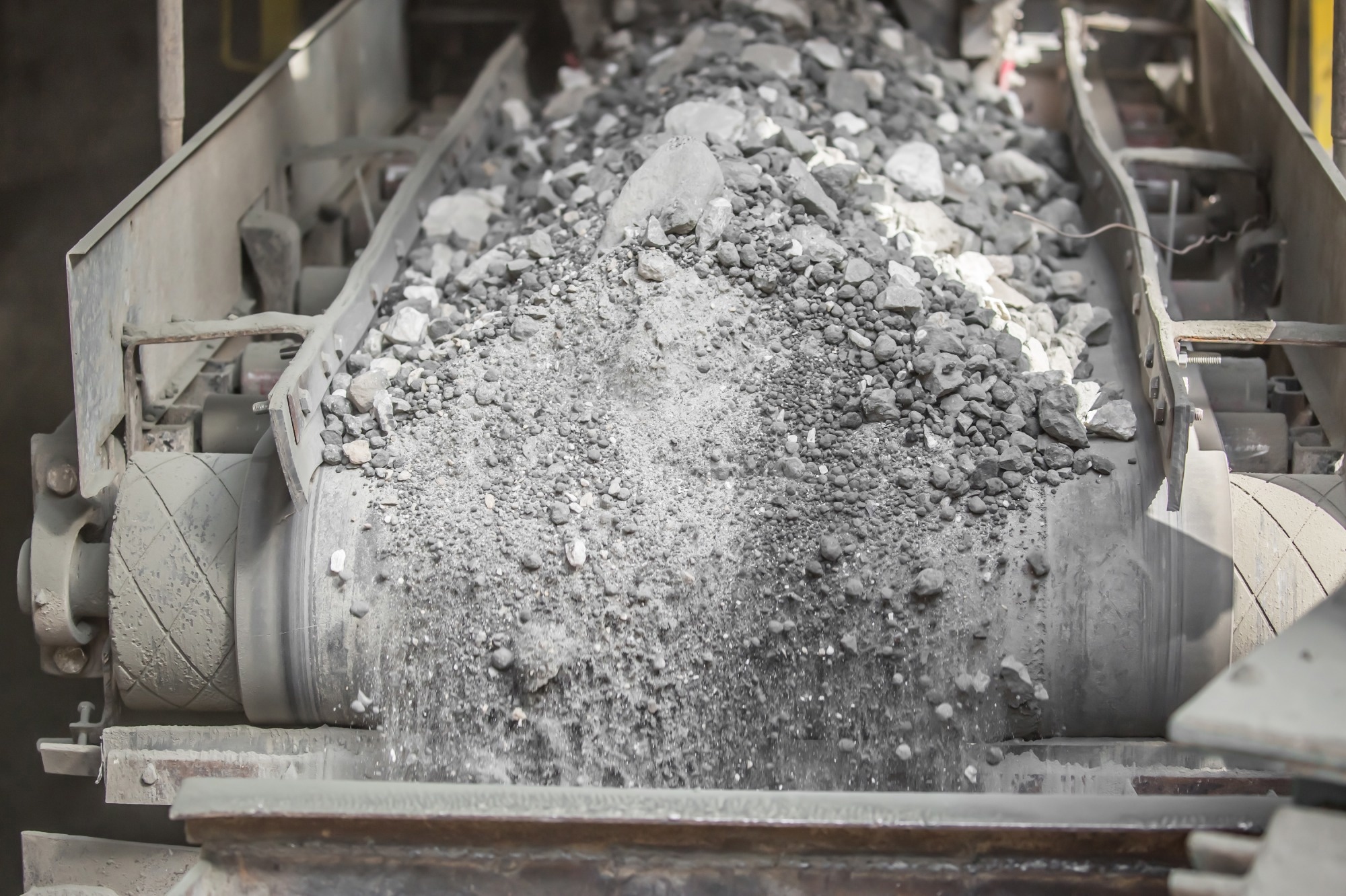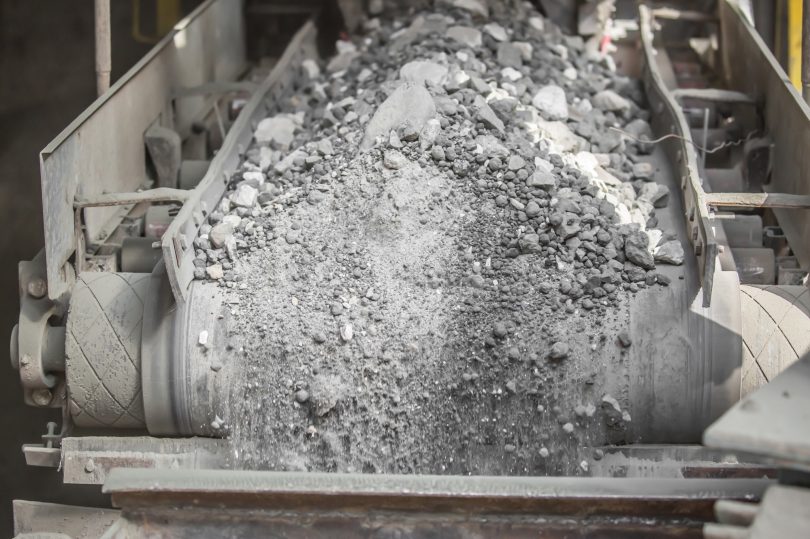[ad_1]
Cement is constantly in demand as it is a main constituent of concrete, with many applications in all types of construction, from buildings to bridges and to ports and landscaping. It is therefore important for cement manufacturers to ensure a continuous, reliable and efficient supply of this material, without the danger of contaminants. Cesare Riva, Bulk Weighing and Monitoring Expert at Thermo Fisher Scientific, discusses the importance of detecting tramp metals during cement production to ensure the quality and safety of the product.
What are the biggest challenges in cement production?
The main concern of cement manufacturers is unplanned production downtime, since it results in loss of revenue. Other key issues are safety of the workers and the protection of equipment, such as conveyor belts, which are vital for the production. Conveyors are often considered the most high risk piece of equipment on a site, and a lot of the danger comes from tramp metals which can make their way onto a conveyor belt. These can cause machinery to malfunction, damaging the equipment and putting people nearby at risk of injuries from scrap metal ejected at high velocity. It is therefore important to use efficient methods to screen for tramp metals to help guarantee the safety of both workers and equipment, and protect the business from sudden halts in operation.
What is a tramp metal and how can it be detected?
Tramp metal is any metal object that accidentally makes its way into a conveyor or bulk material during the mining process. It can be anything from bucket teeth, manganese steel mantles and bore crowns to bar scrap, chains and tools. These unwanted items can cause major damage to not only the conveyor belt itself, but also equipment further down the production line, such as crushers and shredders.
Magnets can be used to pick out metal scrap, but this method has its limitations, and a more reliable solution is installing inline metal detectors to raise an alarm whenever presence of scrap metal is suspected. The conveyor belt can then be stopped – manually or automatically – allowing the safe removal of the foreign object to avoid it entering the downstream process. Some setups are even able to remove the item without stopping the belt, by opening a bypass chute.

Image Credit:Shutterstock/ VeraLarina
How does a metal detector work?
There are two main methods used for detecting scrap metal: one is based on inductance; and the other on Eddy currents. An inductance-based system has a continuously oscillating magnetic field that changes when a conductive object, such as tramp metal, passes through the field. The main advantage of this system is sensitivity, but its biggest drawback is that it can only detect items that are more conductive than the bulk material, and a change in load or the presence of excess water – which is conductive – can trip the alarm. Another big downside of this approach is that tramp metals made from non-conductive ore, for example manganese, will not be sensed.
Eddy current-based systems, on the other hand, consist of a coil with a pulsed current that introduces a primary magnetic field. A conductive object passing though the current creates an Eddy current in the item itself, giving rise to a secondary magnetic field, that can be sensed by the detector. The material can be identified by observing the rate at which the magnetic fields decay when the primary field is switched off. In this manner, a system based on Eddy currents can sense both ferrous and non-ferrous materials, and is not affected by water. Its only downside is that the detection size limit depends heavily on the distance between the coil and the foreign object.
How to choose an optimal metal detector for your application?
Unfortunately, there is no single detector suitable for all applications, so the choice of system depends on several factors, including sensitivity and ease of use. More precisely, the system should:
- work in tandem with conveyor belts;
- not be triggered by the bulk product;
- be able to detect tramp metals accurately and quickly in both dry and wet media;
- allow installation without cutting the belt;
- have a support and coil that are resistant to temperature changes (i.e. fibreglass and PVC);
- operate at low temperatures;
- have an operator-friendly interface for easy setup, calibration and use;
- have HDMI connections suitable for indoor and outdoor installation;
- allow serial communication and connection to a remote PC;
- have a high Ingress Protection (IP) or National Electrical Manufacturer Association (NEMA) rating.
Which additional technical features are important in a detector based on Eddy currents?
The controller of a tramp metal detector should have a fast processor to increase sensitivity and make the most out of the difference in decay times between the product and the foreign object. It should also be possible to adjust the sensitivity and to set an appropriate decay time measurement window – based on the material type code factor – to prevent false alarms. Another thing to consider is that the system should have an operating frequency that is not affected by electromagnetic or radio frequency interference.

Image Credit:Shutterstock/wawritto
Which additional mechanical features should be considered?
There are two types of metal detectors – dual coil and under-belt single coil. The first is suitable for most applications, as it is not sensitive to the location of the tramp metal. Single coil systems, on the other hand, can be used for low burden depth, and can handle large objects that could potentially damage the upper coil in a dual coil detector. For this scenario, it is useful if the dual coil system has a cantilevered swing arm, allowing the upper coil to move out of the way when the risk of collision with bulk material is high. A common point for both designs is that the assembly and coil bonding procedure should be done in a way that alleviates problems caused by moisture, and the systems should be resistant to shocks and rough handling.
What are the main benefits of a tramp metal detector?
Tramp metals can cause significant damage to both the building and equipment, as well as posing a significant risk of injury to the workers. Installing a tramp metal detector helps to create a safe and productive site, minimizing the risk of unplanned operational downtime.

This information has been sourced, reviewed and adapted from materials provided by Thermo Fisher Scientific – Solutions for Industrial and Safety Applications .
For more information on this source, please visit Cement Manufacturing | Thermo Fisher Scientific – US
Disclaimer: The views expressed here are those of the interviewee and do not necessarily represent the views of AZoM.com Limited (T/A) AZoNetwork, the owner and operator of this website. This disclaimer forms part of the Terms and Conditions of use of this website.
[ad_2]
Source link








